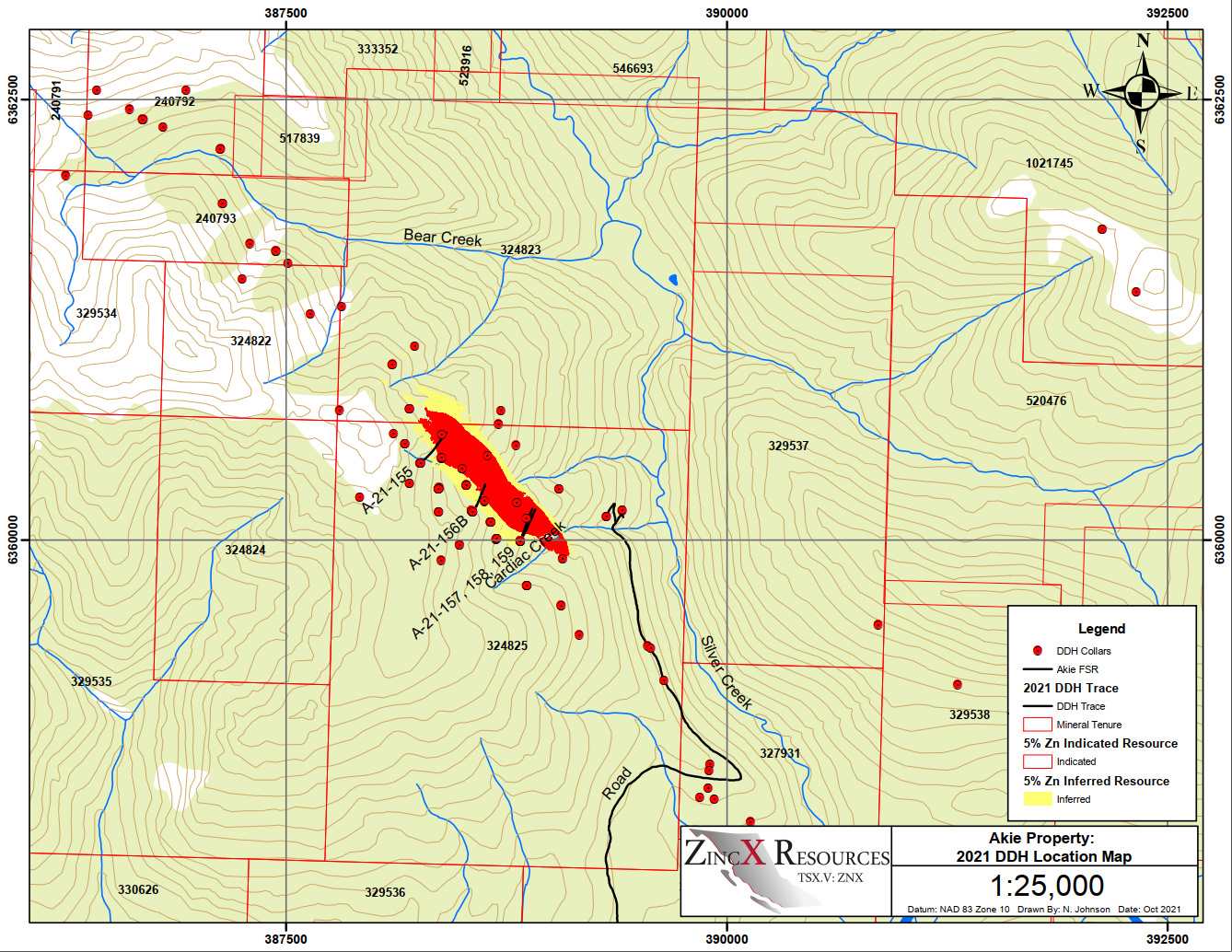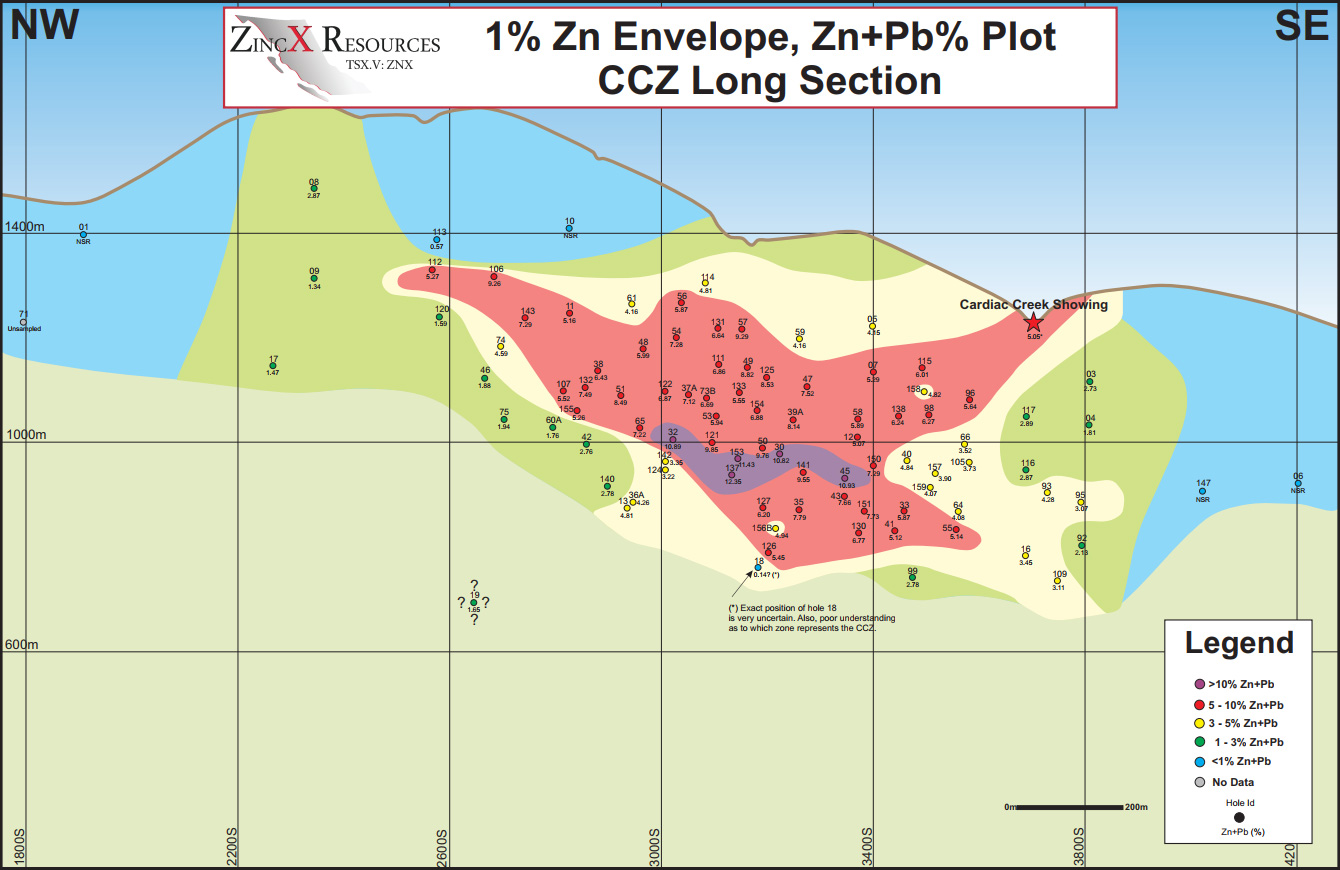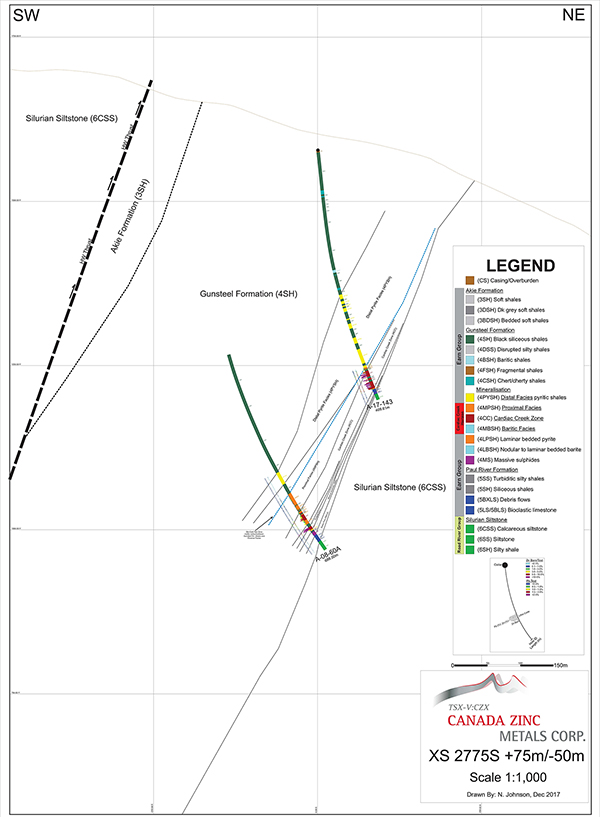Since 2005, the Company has conducted several drilling programs focused on the expansion and delineation of their primary asset, the Cardiac Creek deposit. To date, over 150 drill holes have been completed totalling more than 64,000 metres of drilling (either abandoned or completed). A map of the drilling and a table of all the pertinent drill results can be seen below.


The drilling on the deposit has encountered what appears to be two different horizons of high-grade mineralisation, the Cardiac Creek Zone (CCZ) and the Footwall Zone (FW). Drill results indicate that there appears to be a high-grade corridor central to the deposit. The Zn+Pb% grades across both zones of mineralisation can be found in the following long section.

Select cross sections can be seen below depicting a schematic view of the Cardiac Creek deposit and results from recent drilling programs.

The primary focus of the drilling has been the Cardiac Creek deposit however there are additional property scale targets have been drill tested at various times since 2005 or are being considered for future drilling. These include:
- The North Lead Zone: Located in Bear Valley approximately 3 kilometres along strike and northwest of the deposit. Drilling has intersected extremely thick sequences of bedded pyrite and nodular barite that are highly anomalous in both Pb and Zn. Massive sulphides as well as intense localized alteration has also been intersected. This mineralisation is associated with a surficial Pb geochemical anomaly which give the zone its name. This target remains a high priority for the Company.
- The NW Extension: Located approximately 2 kilometres northwest of the deposit widely spaced drilling intersected Proximal Facies bedded pyrite mineralisation with minor sphalerite banding that returned sub-economic Zn grades and anomalous Pb values. A 1.60 metre thick massive sulphide lens was also intersected that returned 6.99% Zn, 0.25% Pb, 2.35g/t Ag. This target remains a high priority for the Company.
- The Sitka Showing: Discovered in 2013 by Andrew Wilkins, the showing is characterised by a thick barite vein or bed that is enriched in both sphalerite and galena. Channel sampling of the showing returned highly anomalous Pb and Zn values. Grab sampling along strike also returned highly anomalous Pb and Zn values. The showing also appears to be associated with a large open ended >1km length Ag soil anomaly. This target remains a high priority for the Company.
- The South Zinc Anomaly: The anomaly was originally defined by Inmet Mining during their exploration programs in the mid 1990’s and is characterised by a large Zn soil anomaly that is associated with localized areas anomalous in Pb. Limited drilling by the Company has failed to determine the source of the anomalism. This area remains of interest for future exploration programs.
- The GPS Barite Showing: Discovered in 2009 by Andrew Wilkins, the showing is located in a steep ravine along the western boundary of the property and situated in the recently recognized western thrust panel of Earn Group rocks. The showing consists of an approximately metre thick bed of laminated to bedded barite hosted in black shales of the Earn Group. Very limited drilling by the company intersected bedded pyrite mineralisation at depth below the barite. This area remains of interest for future exploration programs.





